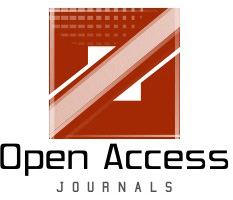Download
Cover Page IJESM_September_2019......
PARTICULAR
|
Page No.
|
 PERFORMANCE AND BEHAVIOR OF NANO FLUIDS ON LAMINAR FLOW DUE
TO SUDDEN EXPANSION USING NUMERICAL INVESTIGATION
PERFORMANCE AND BEHAVIOR OF NANO FLUIDS ON LAMINAR FLOW DUE
TO SUDDEN EXPANSION USING NUMERICAL INVESTIGATION
DR. DAVID SANTOSH CHRISTOPHER
Abstract:
Numerically solved for Laminar two-dimensional sudden expansion
flow using nano fluid. Effect of Reynolds number, nano particle
volume fraction with base fluid and different nano materials are
tested and the solution procedure is validated by benchmark results.
Four different nano particles are tested. It is found that when volume
fraction is increased ,recirculation eddy size is reduced. The bottom
wall and top wall reattachment length is increased linearly while
increasing Reynolds number. Results presented for both bottom and
top wall reattachment length, stream line contour and skin friction
coefficient. Denser materials produce larger eddies. It is found that
volume fraction influences the reattachment length and
symmetry of the vortices. The skin friction coefficient values are
sensitive to volume fraction
Download full Lenght Paper......
|
1-13
|
 WEYL’S THEOREM FOR ALGEBRAICALLY
( ( ), )
* Q A k m
OPERATORS
WEYL’S THEOREM FOR ALGEBRAICALLY
( ( ), )
* Q A k m
OPERATORS
D.KIRUTHIKA
Abstract:
In this piece of writing, we show that Weyl’s theorem and property (
)
holds for algebraically
( ( ), )
* Q A k m
operator.
Download full Lenght Paper......
|
14-21
|
 ANALYTICAL SOLUTIONS OF THE ADVECTION-DIFFUSION
EQUATION
ANALYTICAL SOLUTIONS OF THE ADVECTION-DIFFUSION
EQUATION
R. V. WAGHMARE
Abstract:
The paper provides a review air quality mathematical modeling of the
advection diffusion equation with analytical solutions. In advection
diffusion equation, we write the wind velocity vector and
concentration field as the sum of the average velocity (𝑢 , 𝐶 ) plus the
fluctuating (turbulent) components(𝑢
′
, 𝐶
′
). First consider the
dispersion of an air pollutant in the atmosphere under steady state
condition by neglecting the diffusion in downwind direction, then we
present solution of advection diffusion equation when dispersion of
an air pollutant with constant wind velocity and constant removal
rate. We also described Gaussian plume model with solution for the
variation of concentration of air pollutants and solution of advection
diffusion equation for variable and constant eddy diffusivity and
wind speed.
Download full Lenght Paper......
|
22-32
|
 COMPARATIVE STUDIES ON EXTRACTION, PROXIMATE COMPOSITION OF
PEANUT SEEDS AND PHYSICO-CHEMICAL CHARACTERISATION OF THEIR
OILS FROM DIFFERENT PEANUT VARIETIES GROWN IN INDIA
COMPARATIVE STUDIES ON EXTRACTION, PROXIMATE COMPOSITION OF
PEANUT SEEDS AND PHYSICO-CHEMICAL CHARACTERISATION OF THEIR
OILS FROM DIFFERENT PEANUT VARIETIES GROWN IN INDIA
DR.SHASHIKANT PARDESHI
Abstract:
In the present research work of four different groundnut varieties
such as RS-1(Rs-1), TAG-39 (Tg-39), TAG -51(Tg-51) and TAG-24(Tg-24) were grown under different geographical places in India.
The proximate analysis, oil yield and physicochemical characteristics
of collected groundnut seeds and their extracted oils were determined
for their nutritional assay. It was found that the seeds contained in the
range of extracted oil, moisture, crude protein, total ash, crude fat,
crude fibre, carbohydrate and calories per 100gms were 38.92-41.82
% (±1.2054), 1.98-2.34 % (± 0.1501),28.75-30.63% (± 0.8082),1.34-
2.04 % (± 0.3048), 28.94-31.58 % (± 1.1218),1.98-2.91 % (±
0.3931), 32.45-35.18% (± 1.3163) and 521.18-531.54 (±4.8475)
respectively. The specific gravity, viscosities, impurities and
refractive index of the extracted groundnut seed oil and colour were
in the range of 0.9149-0.9160 (± 0.0008), 91.48-91.62(± 0.0592),
0.025-0.04(± 0.007) ,1.4626-1.4632(± 0.0002) and 1.24-1.88 (±
0.6216) respectively. AV (mg KOH/g oil), IV (g I2/100 g oil), SV
(mg KOH/ g oil), unsaponifiable matter content (%) and ester value
of the extracted oil from groundnut seeds were in the range of2.58-
3.37(±0.3372),90.33-91.89(±0.8212),190.98-192.48(±0.657),0.54-
0.62(±0.0346) and 188.03-189.5(± 0.6586) respectively. This study is
empirical and on the basis of finding it is revealed that groundnut
seed oil can be a valuable source of edible oil
Download full Lenght Paper......
|
33-45
|
 ESTIMATION AND PREDICTION OF POPULATION GROWTH IN INDIA BY
MATHEMATICAL MODELS
ESTIMATION AND PREDICTION OF POPULATION GROWTH IN INDIA BY
MATHEMATICAL MODELS
Shakar Hussain
Abstract:
In this research paper, we used mathematical models to foresee the population
growth in India. India is the second most populated nation after China on the earth’s
planet with about a fifth of the total population [Wikipedia].To expect the population
growth in India from 1971 to 2055 by two mathematical models i.e., exponential and
logistic. The information utilized was gathered from population pyramid.Net. It was
examined sing MATLAB programming and it precisely fitted the logistic growth curve. The
Exponential model predicts a development pace of 2.3% per annum and furthermore
predicts the population to be 3826783879 in 2055. Population growth of any country relies
upon the vital coefficients [from Malthus model]. We decided together the carrying
capacity and the vital coefficients ‘a’ and ‘b’ are 0.02 and 3.0325769575
11 10
. As per
the Logistic model, the population distribution is 2% and target population is 2990164790
in 2055. We calculated the Mean Absolute Percentage Error (MAPE) for exponential and
logistic model is 5.48% and 2.75% definitely
Download full Lenght Paper......
|
46-56
|
 KINETICS AND MODELING OF PRE-TREATED CALOTROPIS
GIGANTEA TO ETHANOL PRODUCTION BY DMC METHOD
KINETICS AND MODELING OF PRE-TREATED CALOTROPIS
GIGANTEA TO ETHANOL PRODUCTION BY DMC METHOD
A.Magesh
Abstract:
The potential of microbial pretreatment of Calotropis gigantea by Fusarium oxy
sporum to degrade lignin and facilitate fuel ethanol production was investigated under direct
microbial conversion (DMC) method. Pretreatment of lignocellulosic biomass using sodium
hydroxide is basically a delignification process, in which a significant amount of hemi
cellulose is solubilized as well Maximum reduction in lignin of 54.66% is achieved for 2.0%
sodium hydroxide concentration, 90 min residence time at 120oC. The effect of initial
substrate concentration, pH and temperature are identified as the major factors affecting
ethanol production by DMC and these can be well studied by statistically designed
experiments using central composite design. The validation of the statistical model and
regression equation are conducted by taking initial substrate concentration of 33 g/l, pH of
5.52, temperature of 30.13°C. Maximum ethanol production of 9.3 g/l corresponding to 32%
of theoretical yield is obtained under optimum conditions. The Logistic model for cell
growth, Leudeking-Piret model for substrate utilization kinetics and product formation
kinetics are tested. All the experimental results are found to be in good agreement with the
theoretical predictions and all the models presented in this work provide a good description of
biomass, product and substrate concentrations.
Download full Lenght Paper......
|
57-79
|
 Implementing a Successful Enterprise Metadata Management
Program
Implementing a Successful Enterprise Metadata Management
Program
Sowmya Tejha Kandregula
Abstract:
An effective metadata management program is a good starting point to catalog an
enterprise’s data assets through a scalable and automated framework to support data
catalogs, glossary (and) dictionary solutions.
This helps in promoting effective data management, data discovery, democratization, and
standardization.
Download full Lenght Paper......
|
80-88
|
 CLOUD COMPUTING FOR GOVERNMENT ORGANIZATION IN INDIA - AN
EXPLORATORY APPROACH
CLOUD COMPUTING FOR GOVERNMENT ORGANIZATION IN INDIA - AN
EXPLORATORY APPROACH
Ashwini Parab
Abstract:
In today's digital world, the Internet is revolutionising the way we work, learn, and interact.
E-Government and business may be effectively linked through the cloud since it allows for
the sharing of resources such as infrastructures, software, and applications between
departments. A number of governments are struggling to keep track of unresolved papers
that have been brought to the attention of the authorities as well as document verification
for a variety of statements that they have been unable to address over the course of the
year. Using cloud-based e-governance to solve these problems and improve e-governance
services is essential. Using cloud e-governance software, citizens can easily access
government services and carry out transparent actions. This article investigates India's
experience with cloud computing and cloud-based e-governance, as well as the challenges
of doing so in e-government applications.
Download full Lenght Paper......
|
89-97
|
 DETECTION OF MALICIOUS WEB PAGES USING NAÏVE BAYES
CLASSIFICATION AS OPPOSED TO K-MEANS TECHNIQUE
DETECTION OF MALICIOUS WEB PAGES USING NAÏVE BAYES
CLASSIFICATION AS OPPOSED TO K-MEANS TECHNIQUE
SPREEHA DUTTA
Abstract:
The main aim behind this project is to detect malicious web pages. So
our approach is to detect URLs instead of domain names since if we
blacklist a domain name, then even after a harmful link has been
removed from it, the domain names stays blacklisted but if we run
our detection for every individual URL on the web page, it removes
the aforementioned risk.
Download full Lenght Paper......
|
98-106
|




 Call for Papers
Call for Papers












